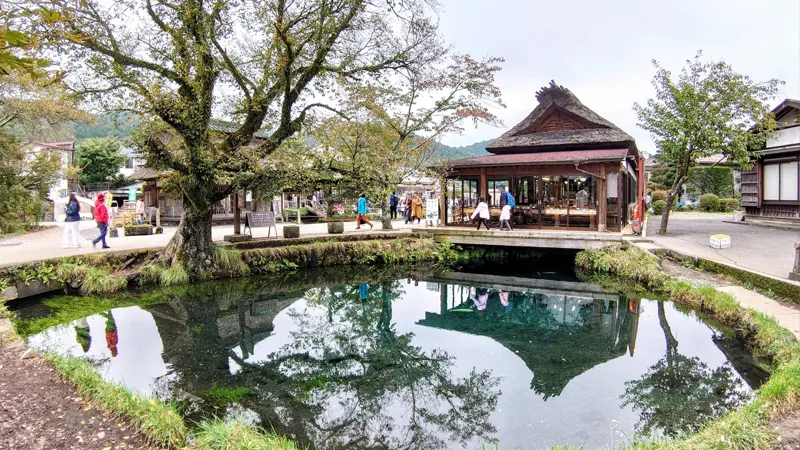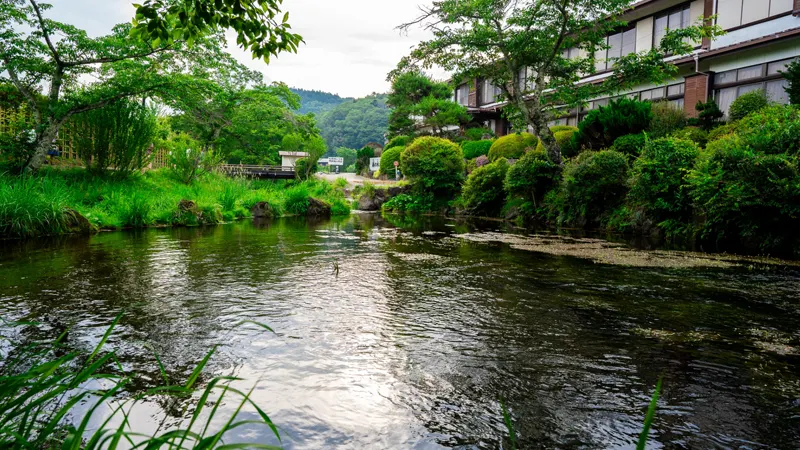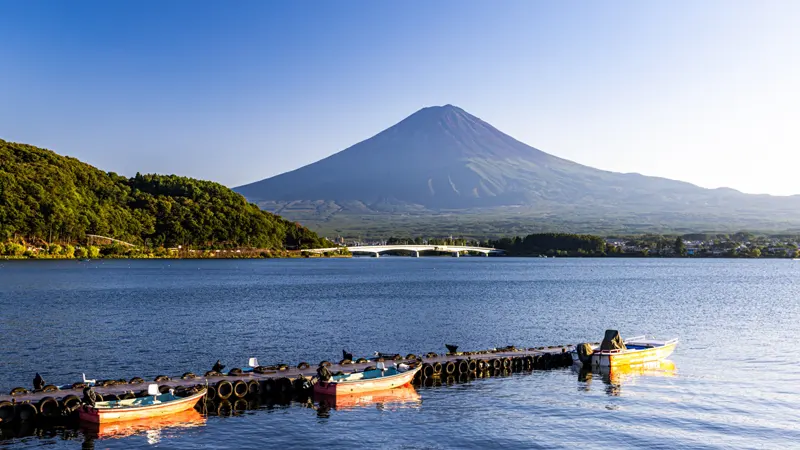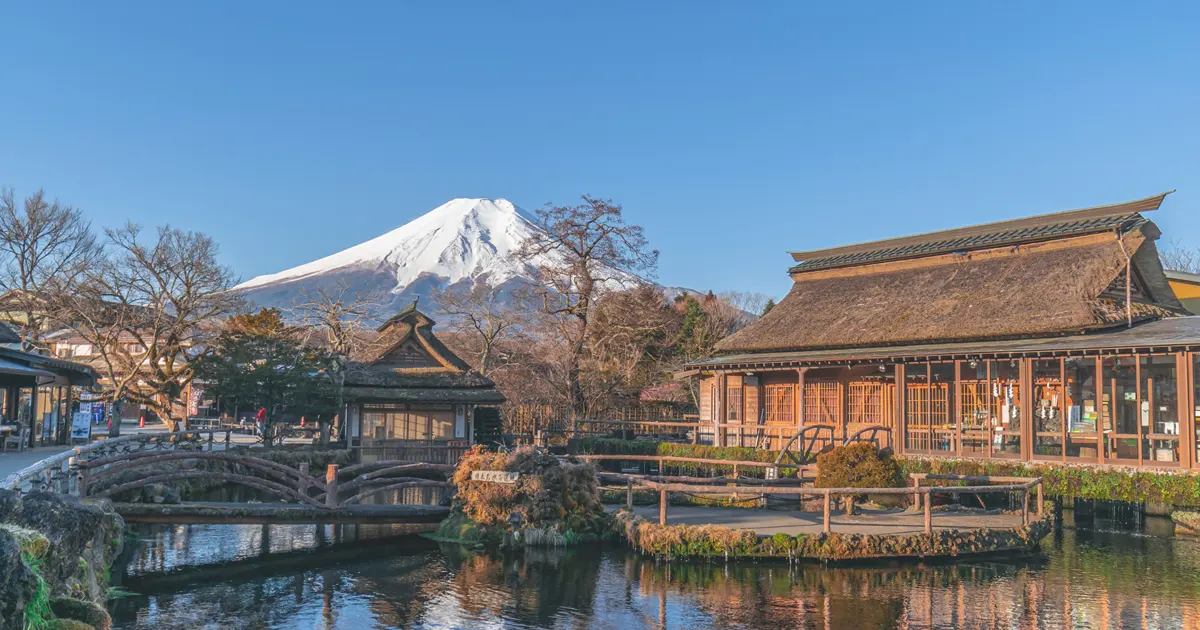Oshino Hakkai is a scenic group of eight spring-fed ponds located in Oshino Village, Yamanashi Prefecture. The crystal-clear water originates from the underground flow of Mount Fuji’s snowmelt, making the site part of the UNESCO World Heritage “Fujisan, sacred place and source of artistic inspiration.” The reflection of Mount Fuji on the calm water surface fascinates visitors, attracting travelers from Japan and abroad throughout the year. Here, where ancient spring culture and natural beauty coexist, visitors can enjoy a peaceful stroll through a village that preserves the traditional landscape of Japan.
This article introduces the main highlights of Oshino Hakkai, nearby attractions, and access information for planning your visit.
Main Highlights of Oshino Hakkai


Yui-ike & Kagami-ike|Clear Waters Reflecting Mt. Fuji
Among the eight ponds, Yui-ike and Kagami-ike are the most visited. Yui-ike, fed by Mount Fuji’s snowmelt that has filtered through volcanic rock for many years, is famous for its remarkable clarity, allowing visitors to see all the way to the bottom. On clear days, Kagami-ike reflects the full view of Mount Fuji on its surface, making it one of the most popular photo spots in the area. Surrounded by wooden houses and narrow paths, these ponds offer a serene atmosphere where you can experience the quiet beauty of a traditional Japanese village.
Okama-ike & Nigori-ike|Diverse Colors and Forms
Okama-ike is a circular pond known for its striking deep blue-green color. The vigorous upwelling of underground water creates unique rippling patterns on the pond bed, captivating those who stop to observe. Nearby Nigori-ike, rich in spring volume, blends beautifully with the surrounding plants to create a distinctive natural landscape. Each pond shows a different hue and shape, and strolling between them reveals the varied expressions of water and light in this traditional Japanese village. The peaceful surroundings make it an ideal place to sense the vitality of nature.
Naka-ike & Hakkai Museum|History and Culture Insights
Naka-ike serves as the central hub for visitors, lined with souvenir shops and local eateries. Many travelers stop here to photograph the view of Mount Fuji beyond the pond. Close by, the Hakkai Museum (Harunoki-bayashi Museum) exhibits materials explaining the origin of Oshino Hakkai, the mechanics of the springs, and the traditional Japanese village lifestyle. It offers both cultural insights and hands-on learning opportunities, showing how nature and people have coexisted for centuries.
Nearby Spots and Experiences

Around Oshino Hakkai, there are several scenic and cultural spots that provide a broader experience of the Fuji area. A short walk away stands Omiya Bridge, where the thatched rooftops of village houses frame Mount Fuji perfectly, creating an ideal photo composition. The nearby Oshino Shinobi-no-Sato theme park offers cultural activities such as ninja experiences and garden strolls. Along the village streets, you’ll also find restaurants serving traditional Japanese soba and tofu dishes made with the same fresh spring water, allowing visitors to combine dining with exploration.
About 15 minutes away by bus lie Lake Kawaguchi and Lake Yamanaka, both part of the Fuji Five Lakes region. Visitors can enjoy sightseeing boats, ropeways, and seasonal flower or autumn foliage viewing spots. Centered around Oshino Hakkai, the area offers a convenient base to experience both nature and local culture in one journey.

